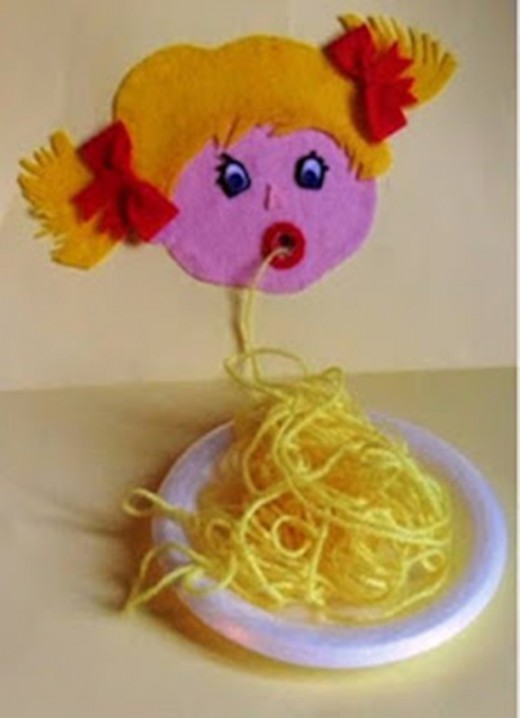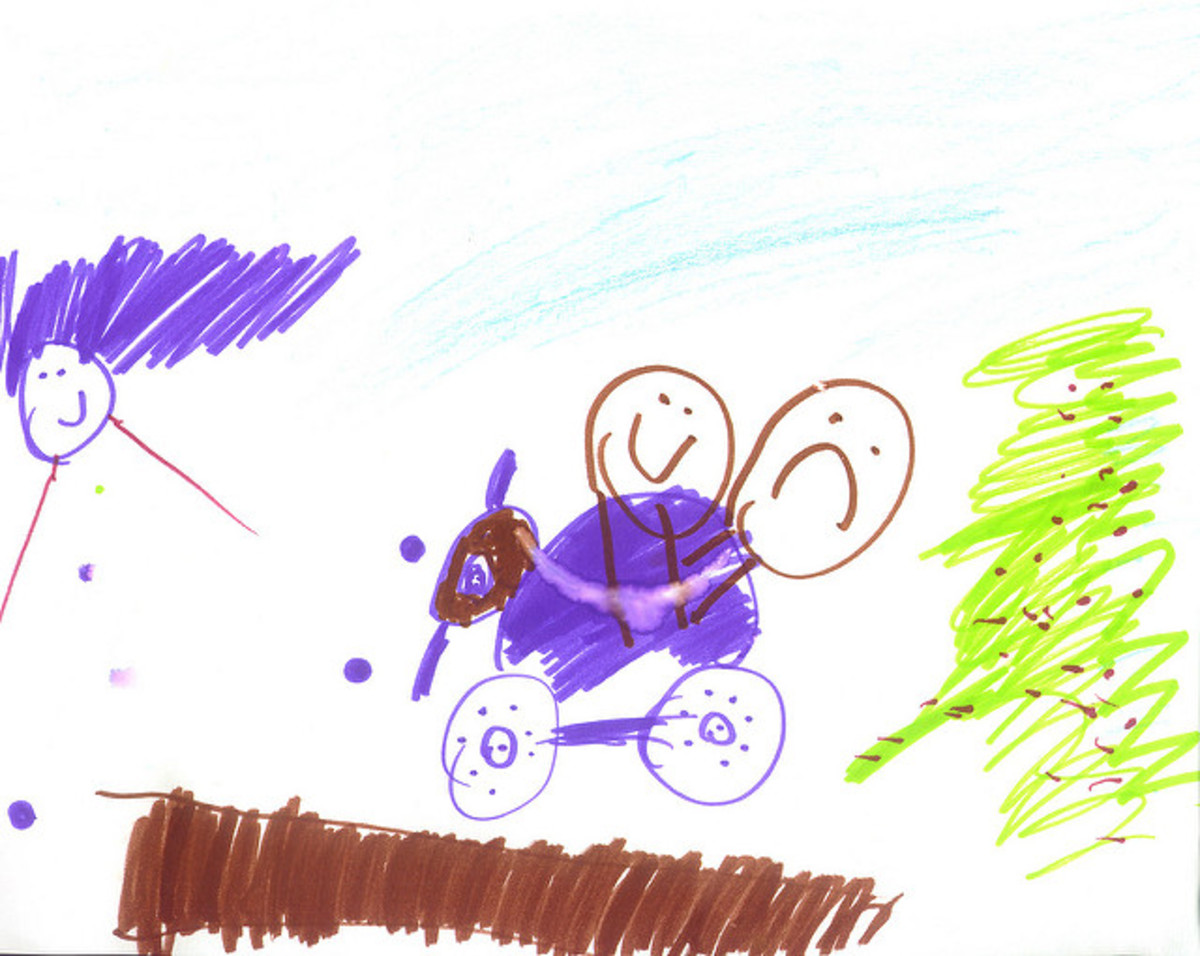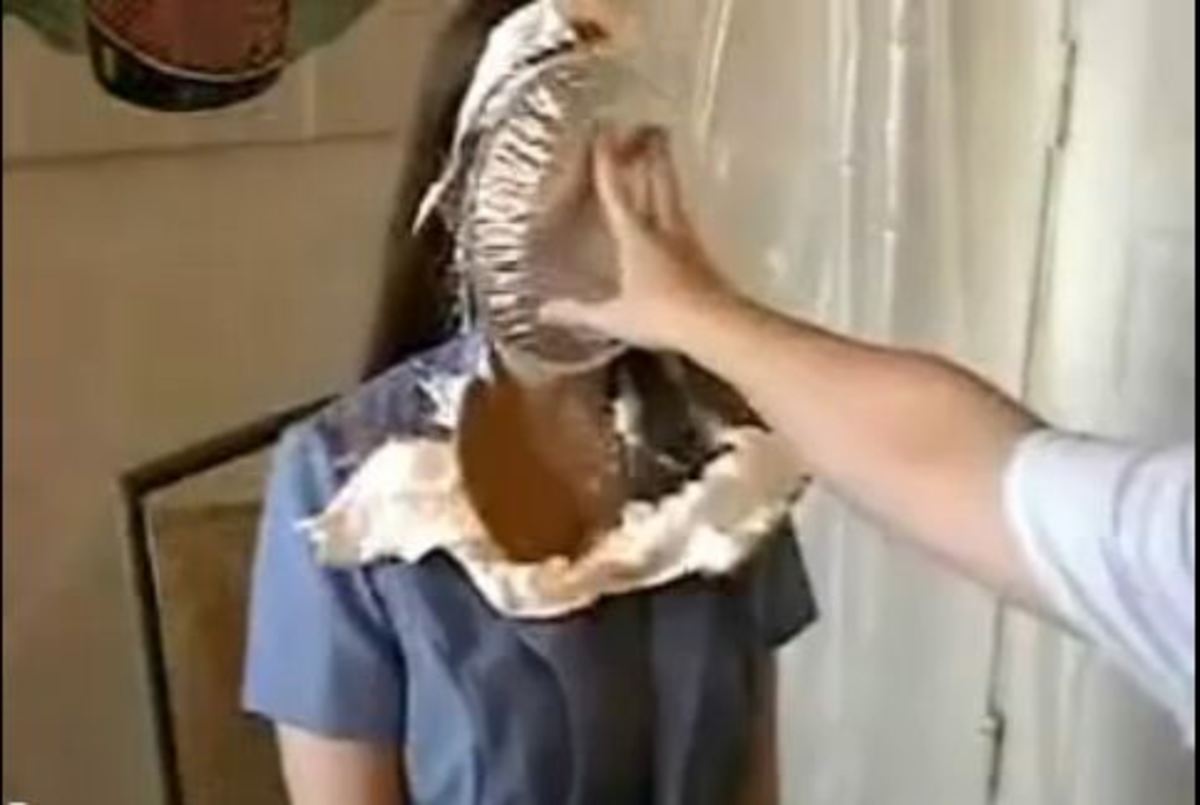- HubPages»
- Education and Science»
- History & Archaeology»
- History of the Modern Era
On Top of the Spaghetti: The Importance of Literacy for Children
Introduction
Transform mealtime giggles into valuable learning experiences! Explore how the whimsical song "On Top of Spaghetti" can enhance children's language development, imagination, and enjoyment through storytelling, singing, and interactive play in daycare settings.
The Significance of Early Literacy in Childhood
Language development starts early and is pivotal in a child's overall growth. Introducing stories—whether fictional, from books, or digital content—helps children interpret the words they hear and comprehend their surroundings.
In daycare environments, fostering early literacy is not just beneficial but essential. It establishes the groundwork for cognitive development and strengthens language abilities. Through repetition and engagement, children begin to grasp language usage, even if they don't fully understand every word's meaning.
.

Activity and Lesson Plan: On Top of the Spaghetti
Objective:
By the end of this lesson, children will be able to confidently retell the story and sing the nursery rhyme, "On Top of the Spaghetti."
Prerequisite Skills:
-
Basic understanding of storytelling
-
Familiarity with nursery rhymes
-
Ability to engage in fun and interactive activities
Materials Needed:
-
Homemade interactive book: On Top of the Spaghetti
-
Audio or video (CD/DVD or YouTube) of the nursery rhyme
-
Internet access (optional, for video support)
Step-by-Step Activity Guide:
-
Gather the children in a semi-circle and introduce the topic of the day.
-
Ask if they like spaghetti, and let them describe how it tastes.
-
Ask if they’ve ever sneezed in front of food and talk about what might happen!
-
Encourage each child to retell the story in their own words (about 1 minute per child).
Transition Ideas:
-
Sing “On Top of the Spaghetti”
-
Use fun songs like “Aka Backa Soda Cracker”
-
Include call-and-response songs or rhythm games
Extension Activities:
-
Dramatic Play: Reenact the spaghetti scene and imagine what happens when someone sneezes.
-
Matching Game: Match words or images related to the story.
-
Memory Game: Recall parts of the rhyme or sequence of events.
-
Coloring: Provide spaghetti-themed coloring pages.
-
Tracing: Practice tracing letters or spaghetti shapes for fine motor skills.
Developmental Focus:
According to cognitive development theorist Lev Vygotsky, learning occurs through social interaction, especially during early childhood. Language and literacy are greatly enhanced when children engage in interactive storytelling and group activities.
This activity supports development in several key areas:
-
Language Skills – vocabulary building, storytelling, rhyme recognition
-
Cognitive Skills – memory, sequencing, comprehension
-
Social Skills – turn-taking, listening, cooperation
-
Imaginative Play – creative thinking and pretend play
-
Intellectual Growth – curiosity, reasoning, and early critical thinking
Extension Activity
1. Dramatic play: scene – eating spaghetti & something happen like in the story
2. Matching game
3. Memory game
4. Coloring
5. Tracing activity
On Top of the Spaghetti video
Development Focus of the Activity
-
According to cognitive development theorist Lev Vygotsky, learning transpires through social interaction, particularly in early childhood. Engaging children in interactive storytelling and group activities significantly enhances language and literacy.
This activity supports development in several key areas:
-
Language Skills: Vocabulary expansion, storytelling, rhyme recognition
-
Cognitive Skills: Memory enhancement, sequencing, comprehension
-
Social Skills: Turn-taking, active listening, cooperation
-
Imaginative Play: Creative thinking, pretend scenarios
-
Intellectual Growth: Curiosity stimulation, reasoning, early critical thinking
ing
-
On Top of the Spaghetti Lyrics
On top of spaghetti,
All covered with cheese,
I lost my poor meatball,
When somebody sneezed.
It rolled off the table,
And on to the floor,
And then my poor meatball,
Rolled out of the door.
It rolled in the garden,
And under a bush,
And then my poor meatball,
Was nothing but mush.
The mush was as tasty
As tasty could be,
And then the next summer,
It grew into a tree.
The tree was all covered,
All covered with moss,
And on it grew meatballs,
And tomato sauce.
So if you eat spaghetti,
All covered with cheese,
Hold on to your meatball,
Whenever you sneeze.
Enhancing the "On Top of Spaghetti" activity with the suggested Activities
Enhancing the "On Top of Spaghetti" activity can provide children with a multifaceted learning experience that combines literacy, creativity, and sensory exploration. Here are several expanded ideas to enrich this activity:
1. Spaghetti Sensory Bin
Create a sensory bin filled with cooked spaghetti noodles. Add food coloring to make the noodles vibrant and appealing. Include props like plastic meatballs, utensils, and bowls. Encourage children to explore the textures and engage in imaginative play, reenacting scenes from the song or creating their own spaghetti adventures. Pinterest
2. Spaghetti Letter Formation
Utilize cooked spaghetti to form letters and words. Guide children to shape the noodles into letters of the alphabet or spell out simple words related to the song, such as "spaghetti," "meatball," or their own names. This activity enhances fine motor skills and reinforces letter recognition. Pinterest+1Hands On As We Grow®+1
3. Craft: Paper Plate Spaghetti Art
Provide children with paper plates, yarn (to represent spaghetti), red pom-poms (for meatballs), and glue. Have them create their own spaghetti plates by gluing the yarn and pom-poms onto the paper plates. This craft activity fosters creativity and offers a tactile connection to the song's theme.
4. Puppet Show Retelling
Encourage children to create simple puppets representing characters or elements from "On Top of Spaghetti." They can use socks, paper bags, or craft sticks. After crafting, children can use their puppets to retell the story or invent new endings, promoting narrative skills and confidence in storytelling.
5. Spaghetti Counting Game
Incorporate math skills by using uncooked spaghetti noodles and meatball-shaped counters. Set up simple addition or subtraction problems, such as adding meatballs to a plate or taking them away. This hands-on approach makes learning numbers engaging and relatable. Teachers Pay Teachers+1Pinterest+1
6. Story Sequencing Cards
Develop a set of cards depicting key events from the "On Top of Spaghetti" song. Have children arrange the cards in the correct sequence, reinforcing comprehension and recall abilities. This activity can be done individually or in small groups to encourage collaboration.
7. Cooking Activity: Make Spaghetti Together
If feasible, involve children in a simple cooking activity where they help prepare and enjoy spaghetti. Discuss the ingredients and steps involved, emphasizing vocabulary and procedural language. Sharing the prepared meal can also teach social skills and the joy of communal eating.
8. Dramatic Play: Spaghetti Restaurant
Set up a pretend play area as an Italian restaurant. Provide props like menus, chef hats, aprons, and play food. Children can take on roles such as chefs, waiters, and customers, engaging in role-play that enhances social interaction and language development.
9. Music and Movement: Spaghetti Dance
Create a dance or movement activity where children mimic the actions described in the song—sneezing, chasing a rolling meatball, etc. This kinesthetic approach helps internalize the story's sequence and adds a physical element to learning.
10. Interactive Storytelling with Props
Gather props related to the song, such as a fake meatball, a plate, and a fork. As you narrate the story, use the props to act out the events, encouraging children to participate and predict what happens next. This method makes the story more engaging and memorable.
By integrating these activities, educators can create a comprehensive and engaging lesson plan centered around "On Top of Spaghetti." These approaches cater to various learning styles, ensuring that each child can connect with the material in a meaningful way.
Sources
Conclusion
Early literacy is more than just reading—it’s about connection, creativity, and communication. Using playful stories like “On Top of the Spaghetti,” educators can nurture a child’s love for language while supporting their cognitive and social development. Let the learning begin with laughter!
Early literacy encompasses more than reading—it's about fostering connections, creativity, and communication. Utilizing playful songs like "On Top of Spaghetti," educators can cultivate a child's love for language while supporting their cognitive and social development. Let the learning commence with laughter!Wikipedia+2American Songwriter+2Reddit+2
© 2018 Maribel








